Photos provided by Michelle Bowen
When artist and Troy native Michelle Bowen first thought of the concept behind her project, “Huelitic Code,” it manifested itself in a powerful vision. It was 2004 and Bowen was sitting on her couch watching the news as anchors described another terror attack. She pondered the way language had become weaponized, how violence could be described as an act “in the name of God.” Suddenly, it appeared before her eyes like a mirage–colors taking the place of these letters, dismantling the meaning of our words.
“If somebody could use a word that’s the embodiment of love and beauty, and use it as the embodiment of hate and killing and murder, we’ve really got to change our language, it just doesn’t work,” she remembers thinking. “I hate to say it was like divine intervention, but it felt so powerful. I just started seeing words in color in my head–just so strong. So I went to the computer and I started doing this in a very rudimentary way, like I was grabbing like, little pieces of various different religious texts from Sikhism, or Hindu or the Bible. And I just stepped away from it. I was so overwhelmed by the beauty of it that I’m moved to tears just thinking about that. The intention of all of those scriptures, the beauty of it, the purity of it, the love that you wouldn’t be able to see in the words. That was what I was trying to achieve with this. Here I was in a one bedroom with a brand new baby. I had no art background. But I kept thinking, this is a bigger idea, we’re so boxed in by these 26 letters.”
Bowen didn’t fully materialize the work for another 15 years.
“You don’t let things grow in you for for that long period of time unless you know it’s really right,” Bowen smiles, leading The Collaborative around her exhibit at The Arts Center of the Capital Region in Troy, on display through Feb. 2.

“I did little things with the color and sketches, but I refused to make a painting until I could actually do it right because it would have been too painful for me,” she continues. “I don’t know if that makes sense but to do one and then have to not be able to do more?” She shakes her head.
Over the years, Bowen, who has a master’s degree in communication, delved into studying linguistics, anthropology and anything else she could get her hands on to make her intention feel right.
“I had such a compulsion to do it. I have boxes and boxes of notes,” she says.
Eventually she took a step back, realizing the point of this “code” isn’t about creating new language, but disrupting our method of understanding, our compulsion to find truth when, for the artist, there is no absolute truth to be found in language.
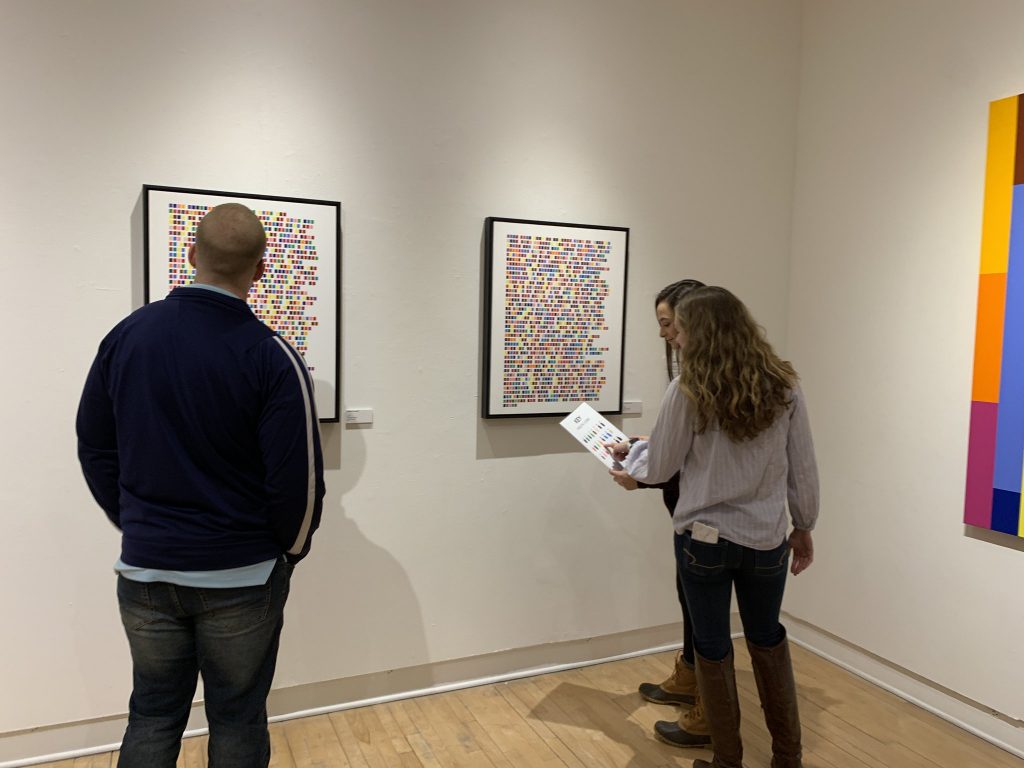
“Either language is just incredibly primitive said a very primitive state, or we’re just going about it in the completely wrong way. I don’t know which it is. I guess I lean a bit towards the latter,” Bowen says. “Our words are built on emotion. Certain words put us in a trance, happiness, love, hate–all these words that are very conflicting and hard to grasp. Everything’s so siloed and I think that’s a big problem, too, because nature doesn’t understand that.”
“The truth of this work isn’t in the doing, it’s in the not doing,” she continues. “The very act of decoding is simply motivated by the current human condition.”
What has resulted in the exhibition of her “Huelitic Code is a series of thought-provoking–and sometimes whimsical–series of opposing binaries such as the series in itself, “Love and Hate” which was Bowen’s initial kickstart of the project, as well as a handful of others such as “Democracy and Autocracy” or Tolerance and Ignorance.” Additionally there are displays of sculpture work, a word scramble and passages of coded “text” and “quotes” that viewers, with their supplied color key in hand, can decode at their will.
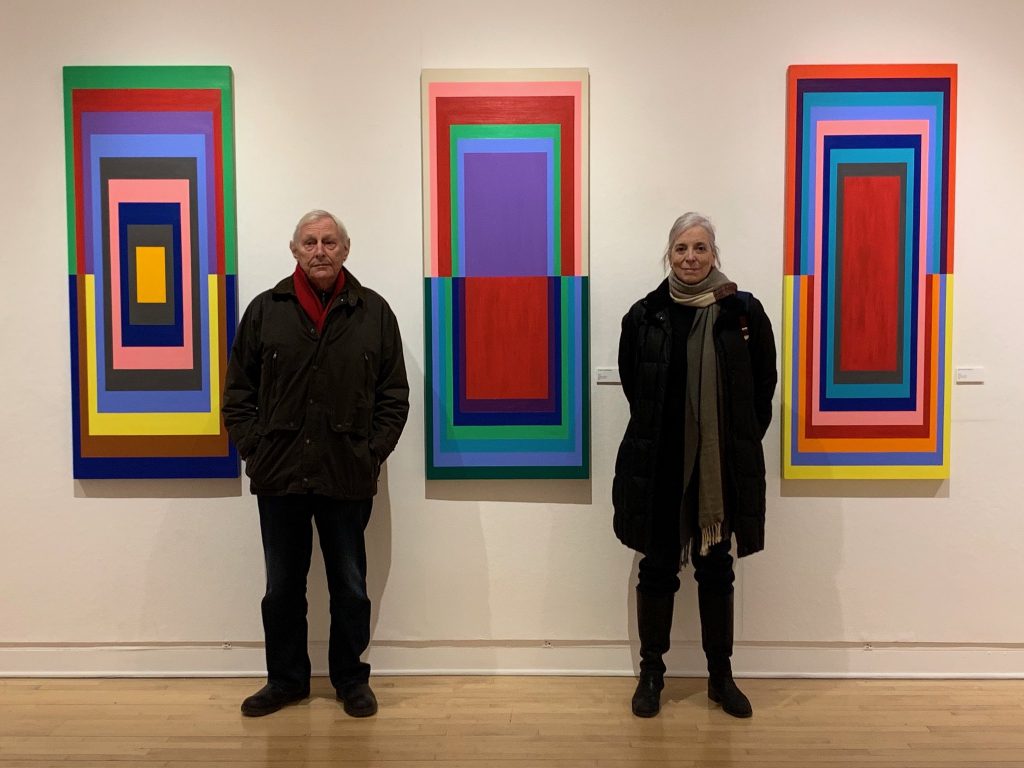
One series isolates colors on backdrops of black and white, offsetting them with their associated letters. Like saying a word over and over again quickly, it begins to become abstract–to lose its meaning.
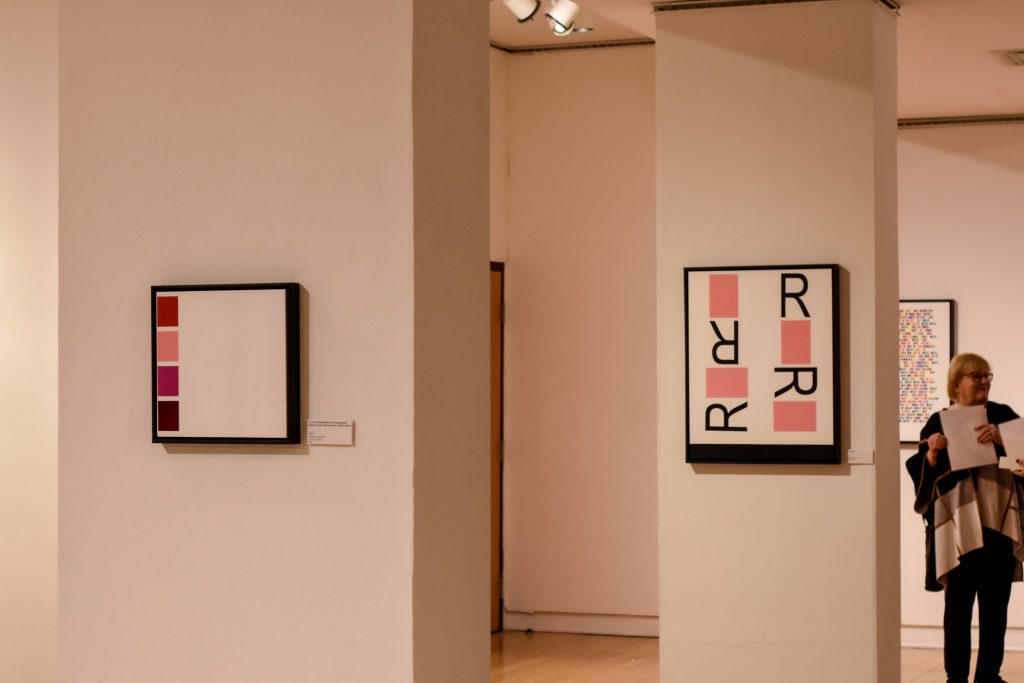
“I wanted to use the Huelitic Code as if it’s a community of people,” the artist explains. “I’m going to segregate them and pull these out from our random ideas of color, you know, like we do all the time in our world, which is just absurd and arbitrary.”
Her work “North, South, East, West” turns these definitions of separation into connecting lines, a rectangular world, or “quantum speck,” floating on a wall of black vastness.
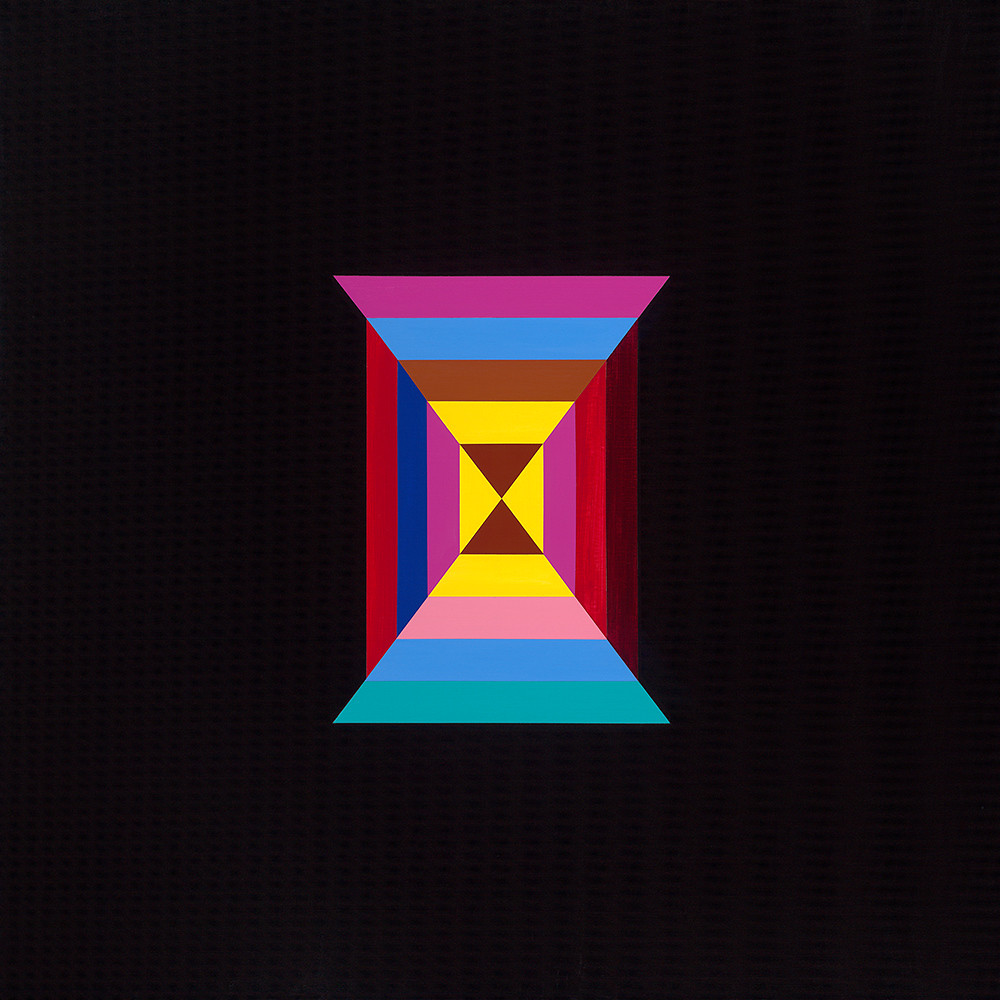
“God is Love (or) How to Have a Conversation” is an exemplary piece, showcasing Bowen’s aim to make the Code about more than just matching colors and letters or solving a puzzle. There is something to think about. In this work, the colored lines seemed to try to break beyond the border of the canvas, lines of white, matching the white square of its center, hold it in. It’s one of her most personally meaningful works.

It’s not just about this concept of ‘God” but also how we have a conversation in that we need to come into it with a purity of mind and clarity to end it in the same way,” she explains.
Bowen says she found “real partnership” in The Arts Center of the Capital Region and, particularly, curator Belinda Colón. She had reached out to the artist after Bowen submitted work to the Arts Center’s annual call for art.
“She gave me a spot where I could think about where everything could go. That really motivated me to complete as many pieces that I have. I really don’t think I wouldn’t even be a fraction of the way done if it wasn’t for this.”
Default Gallery Type Template
This is the default gallery type template, located in:
/var/www/html/collabmag/wp-content/plugins/nextgen-gallery/products/photocrati_nextgen/modules/nextgen_gallery_display/templates/index.php.
If you're seeing this, it's because the gallery type you selected has not provided a template of it's own.
“Ignorance is bliss,” she laughs. “When she offered me the space, I think I had maybe a handful of these done. Everything you see I created over the last two years, there’s about 90 hours of work in just the painting “Love and Hate #1″…if you can believe this, I redid some of them twice over again. I was just really focused. I’d wake up at five in the morning, work for an hour and a half and then go to work all day. Then I get home and cook dinner, work until 12 or one in the morning and just do the cycle over again. It was great, I loved it.”
It’s been a welcome addition to the Art Center’s main gallery. Colón told The Collaborative an estimated 5,000 viewers spent time in the exhibit during Troy’s December Victorian Stroll alone.
Default Gallery Type Template
This is the default gallery type template, located in:
/var/www/html/collabmag/wp-content/plugins/nextgen-gallery/products/photocrati_nextgen/modules/nextgen_gallery_display/templates/index.php.
If you're seeing this, it's because the gallery type you selected has not provided a template of it's own.
While The Collaborative was discussing the works with Bowen, the artist paused to say hello to a frequent visitor.
“I just can’t stay away,” the older man joked as he passed.
The interactive nature of “Huelitic Code” has not only engaged seasoned art lovers–and those interested in linguistics and other subjects–but has opened a door to young viewers and those who may see the art world as inaccessible, even intimidating.
“It allows people the feeling that they can ‘get’ art and it’s not about them. They don’t have to use certain words to talk about them or have to understand what you’re trying to say,” Bowen says. The artist also hopes her works will introduce people to more of the abstract art world, giving them something to build off of, ask questions about and maybe understand other artists on a different level.
Bowen is currently looking for the next home for “Huelitic Code” and hopes to continue painting on a smaller scale. She’s considered crafting an entire “manifesto” of the code and its mission in Huelitic style, one that could be shared, personalized and grown.
“It’s endless,” she says. “I want an art movement.”

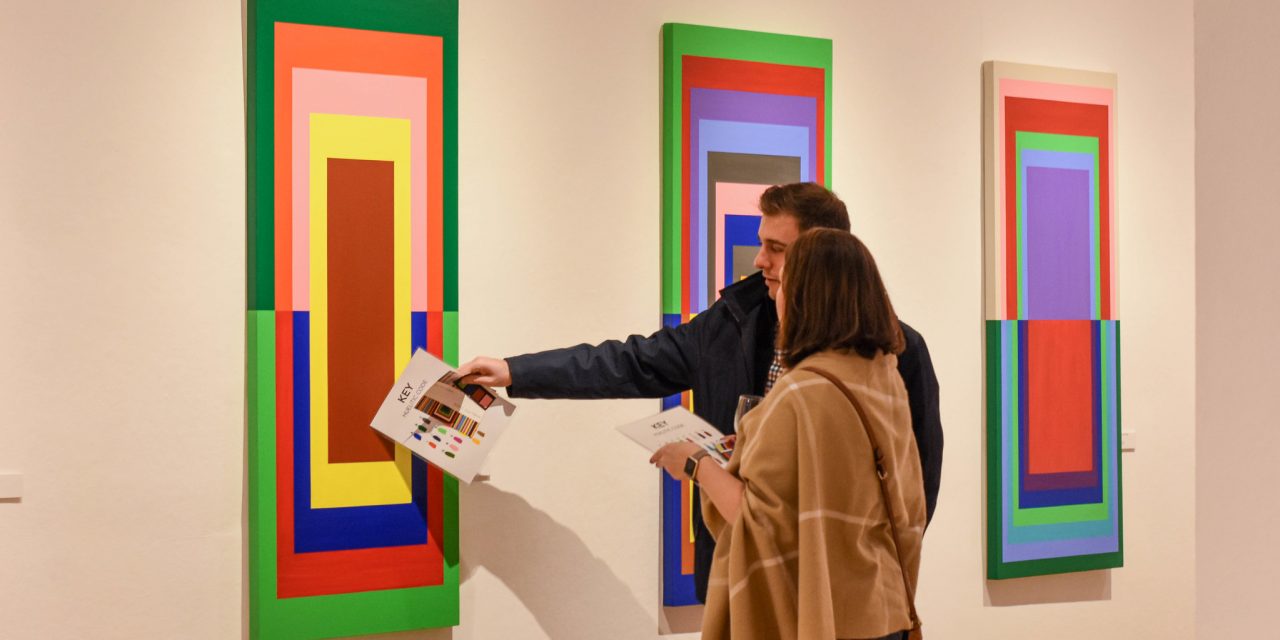
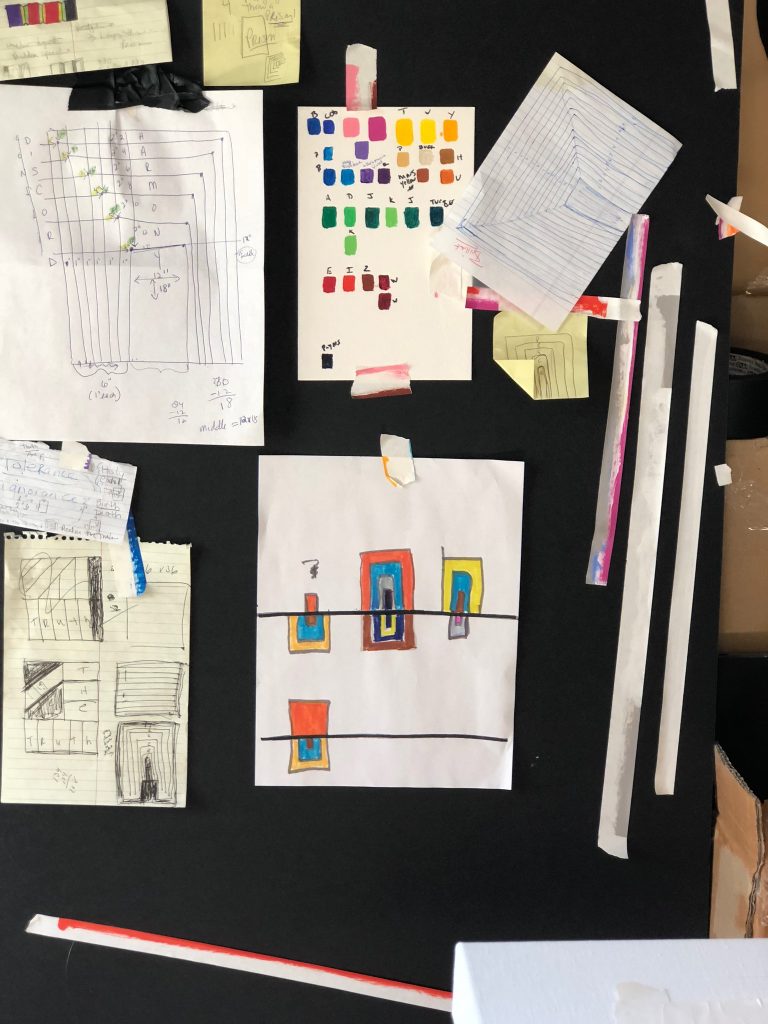
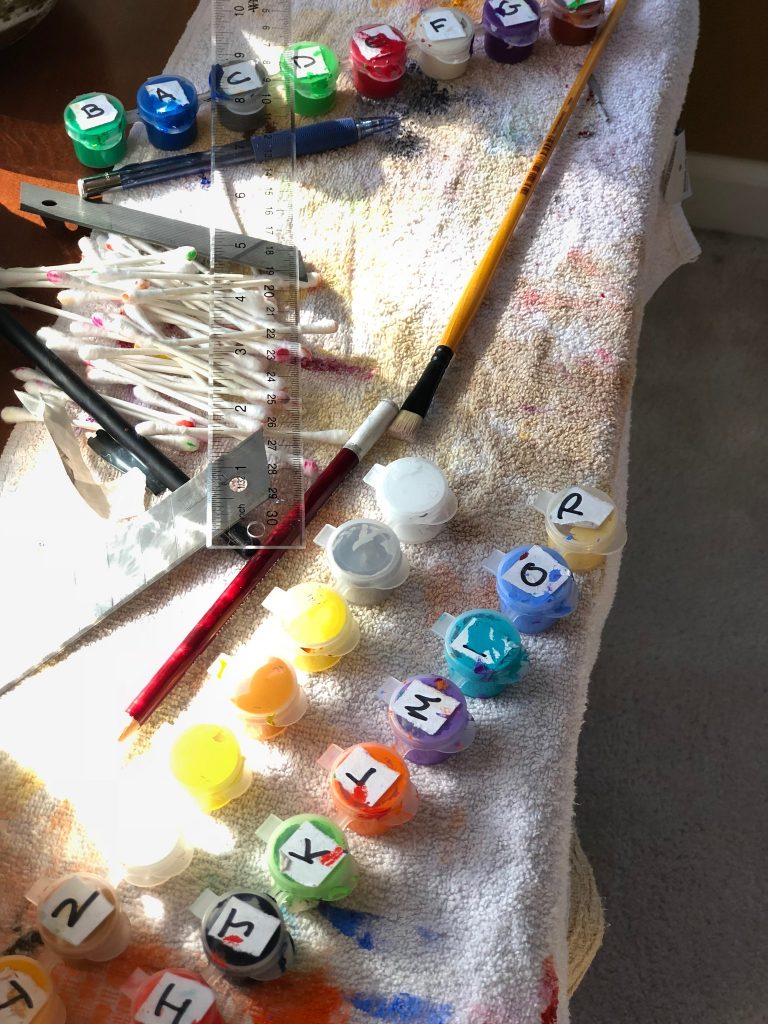
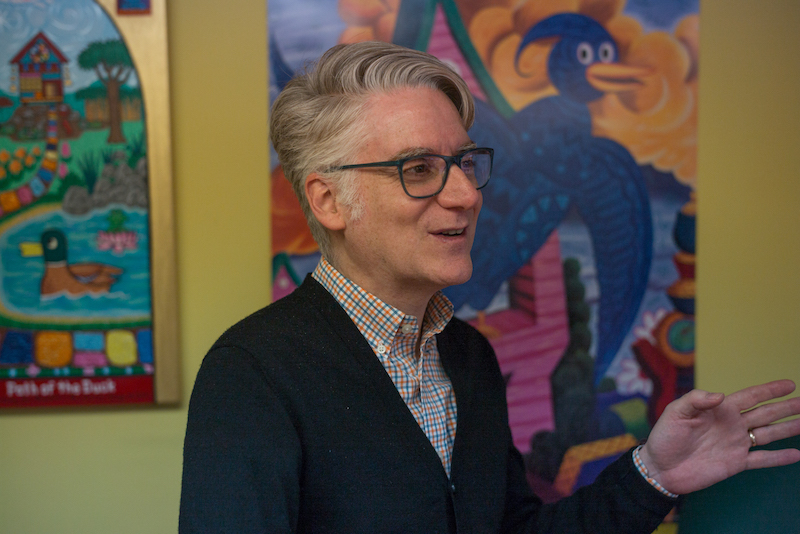
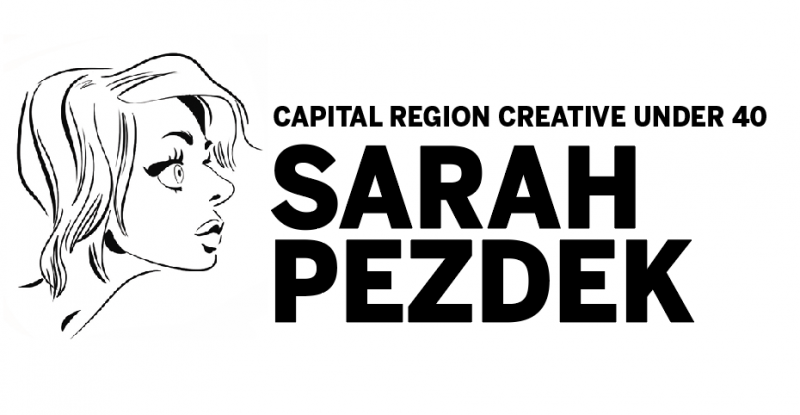
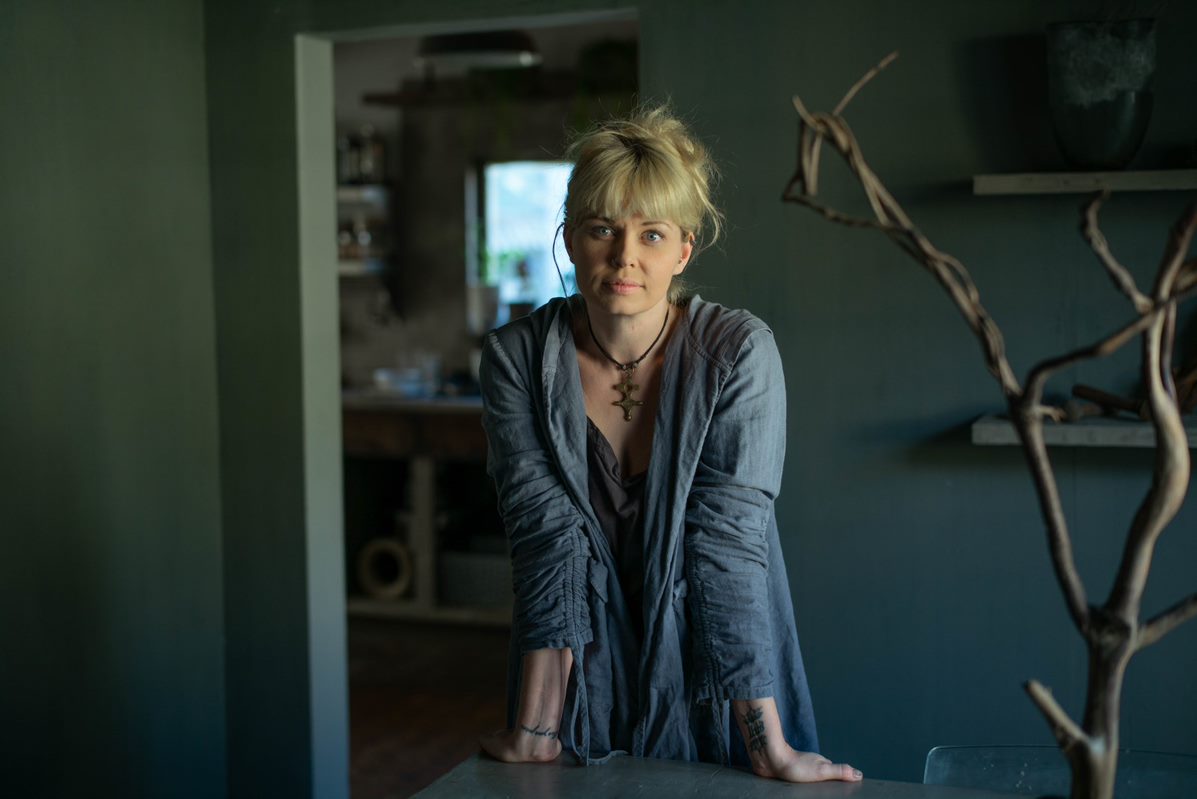
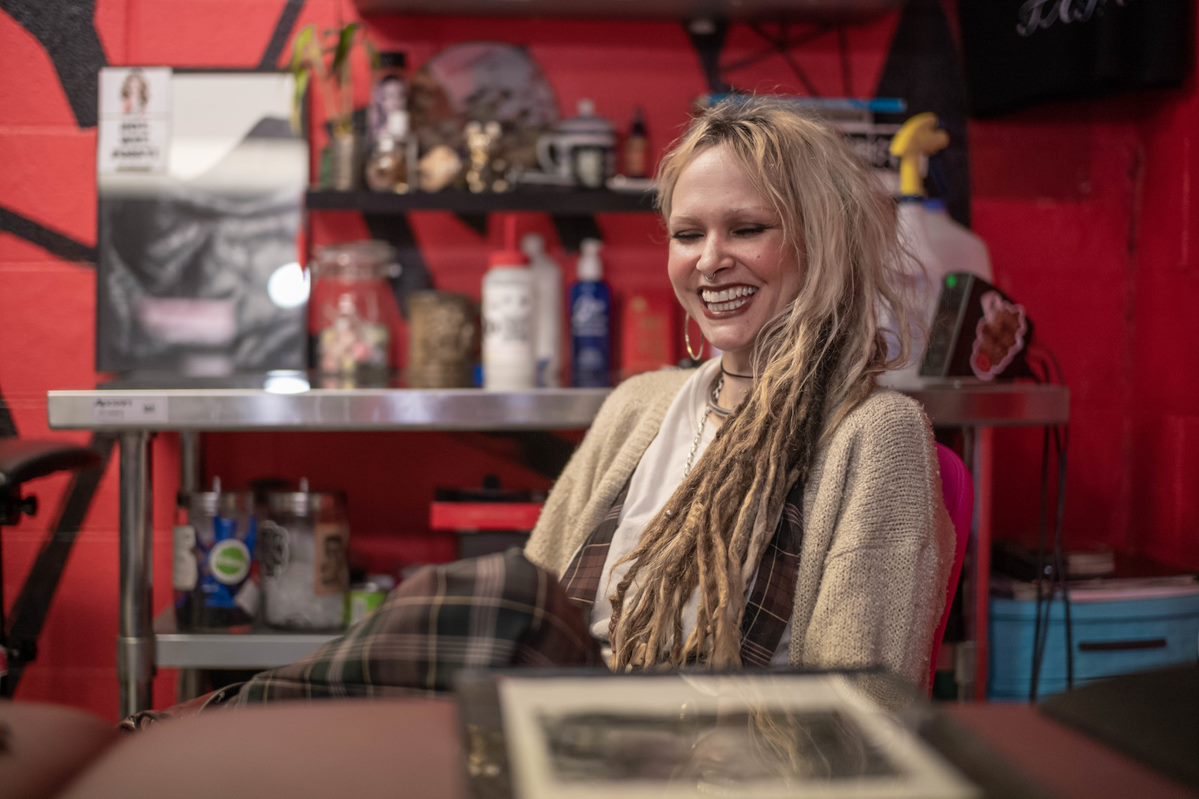
Trackbacks/Pingbacks